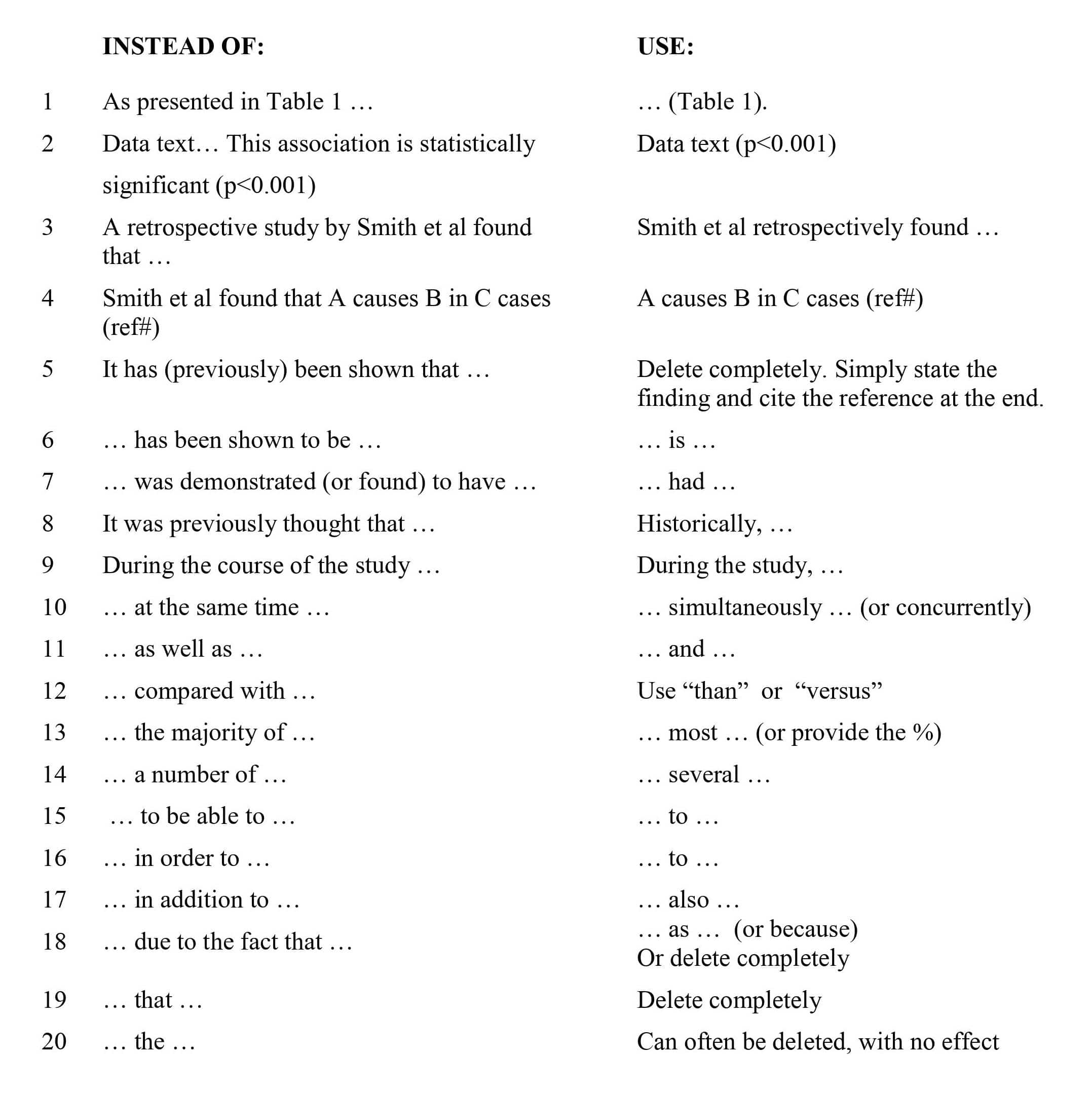You’re finally in a writing rhythm, and you’ve carefully crafted and edited your manuscript to perfection. But it surpasses the peer-reviewed journal’s word limit. In many cases, if a submitted manuscript is just one word over the maximum allowed, the paper is summarily rejected without consideration. It isn’t even seen by the editor. What to do?
Some basic suggestions to reduce your word count include:
a) convert data in the Results section to tables and figures and only highlight the key point(s) within the text;
b) delete subjective, descriptive words such as undoubtedly, purportedly, in all likelihood, dramatic, unprecedented, remarkable, and notable;
c) switch from passive voice to active voice, which uses fewer words;
d) critically review the Discussion section to ensure each paragraph is on point with the purpose of the study and corresponds directly to something in the Results section, otherwise delete it.
After you’ve critically reviewed your full paper and deleted any extraneous words or sentences, you may still be over the word limit. Over the years, I’ve worked to make my scientific writing more efficient – unlike my verbose, more conversational style in these blogs. So I’ve put together a table for you with my Top Twenty ways to make your writing more concise and reduce your word count.

I hope these examples will inspire you to re-examine your writing and find ways to make the text more efficient and succinct. I’d love to hear about any additional tips you routinely use to make your language more concise in the comments section below.
Would you like to be notified when future writing tips are posted, so you don’t miss any? Then just check the box under the Stay Up To Date heading at the top right of this page and provide your email address. I promise it won’t be used for any other purpose.


Recent Comments